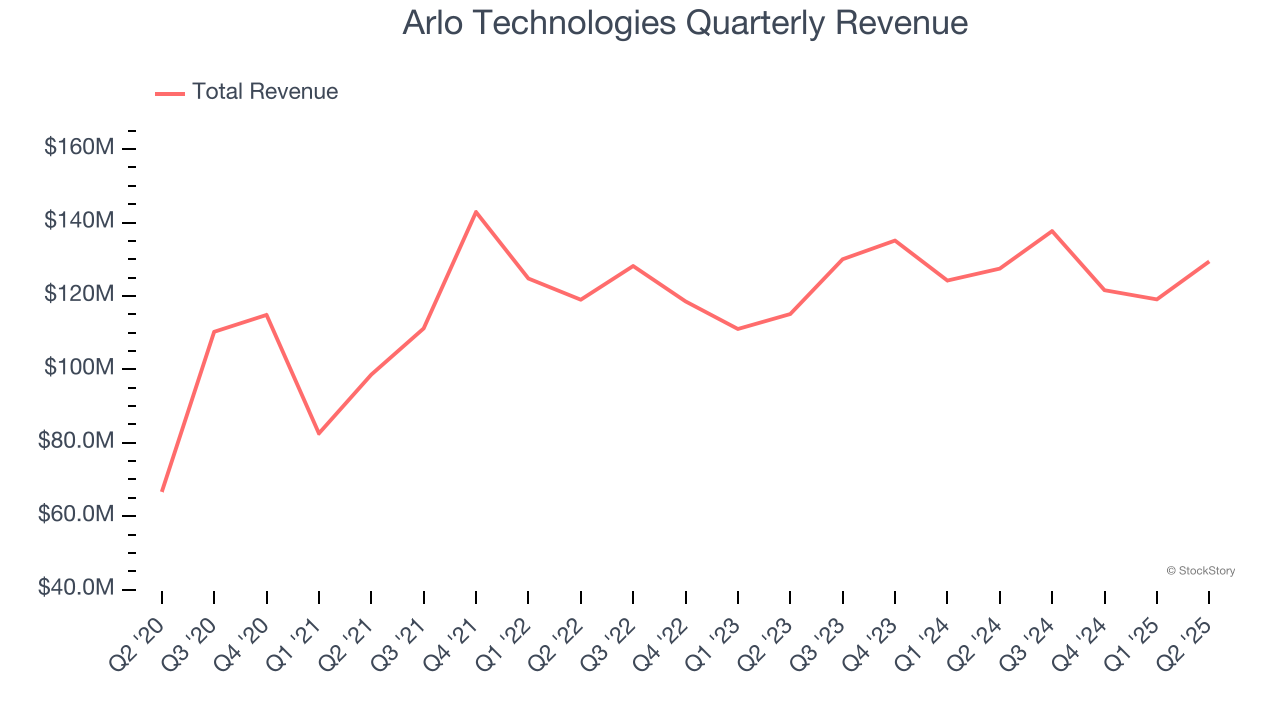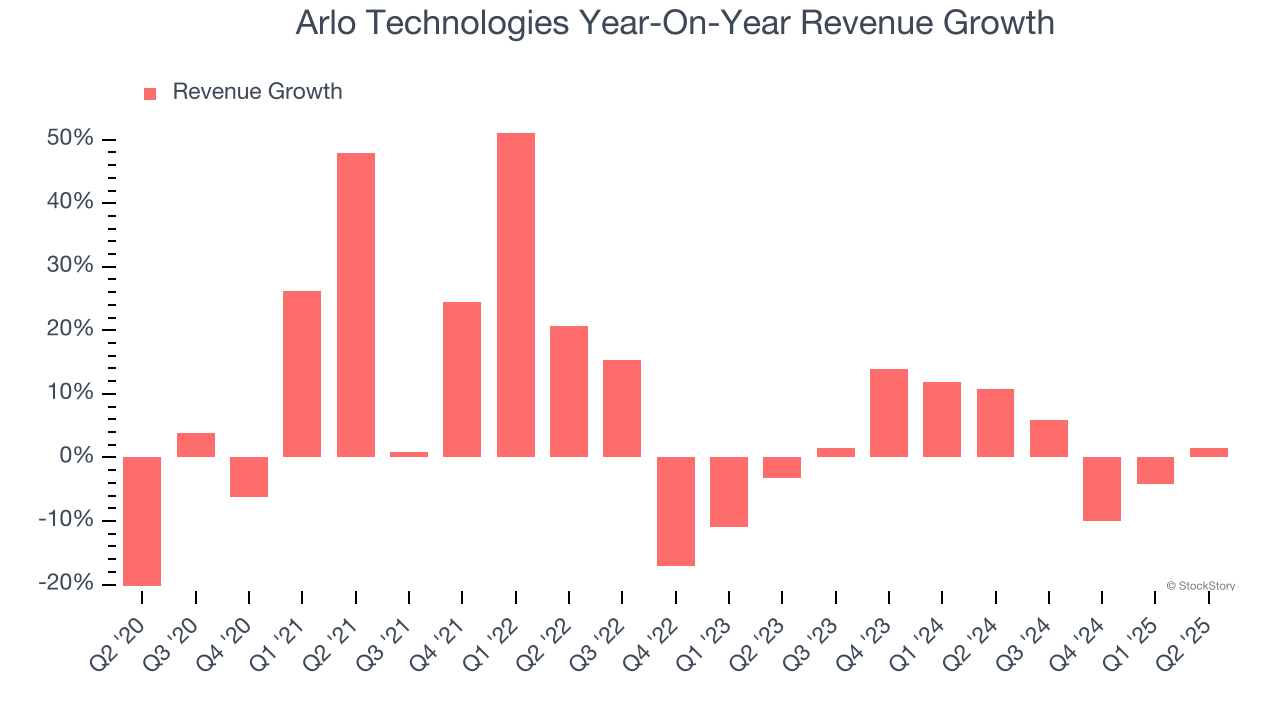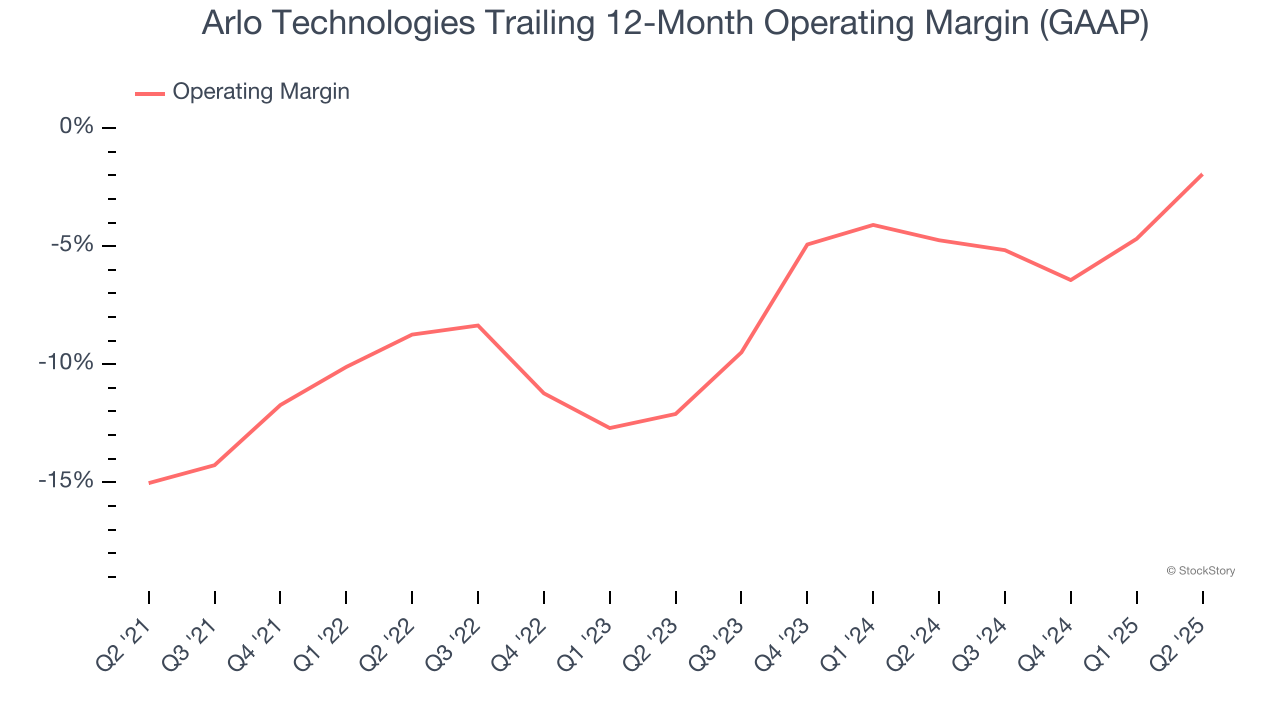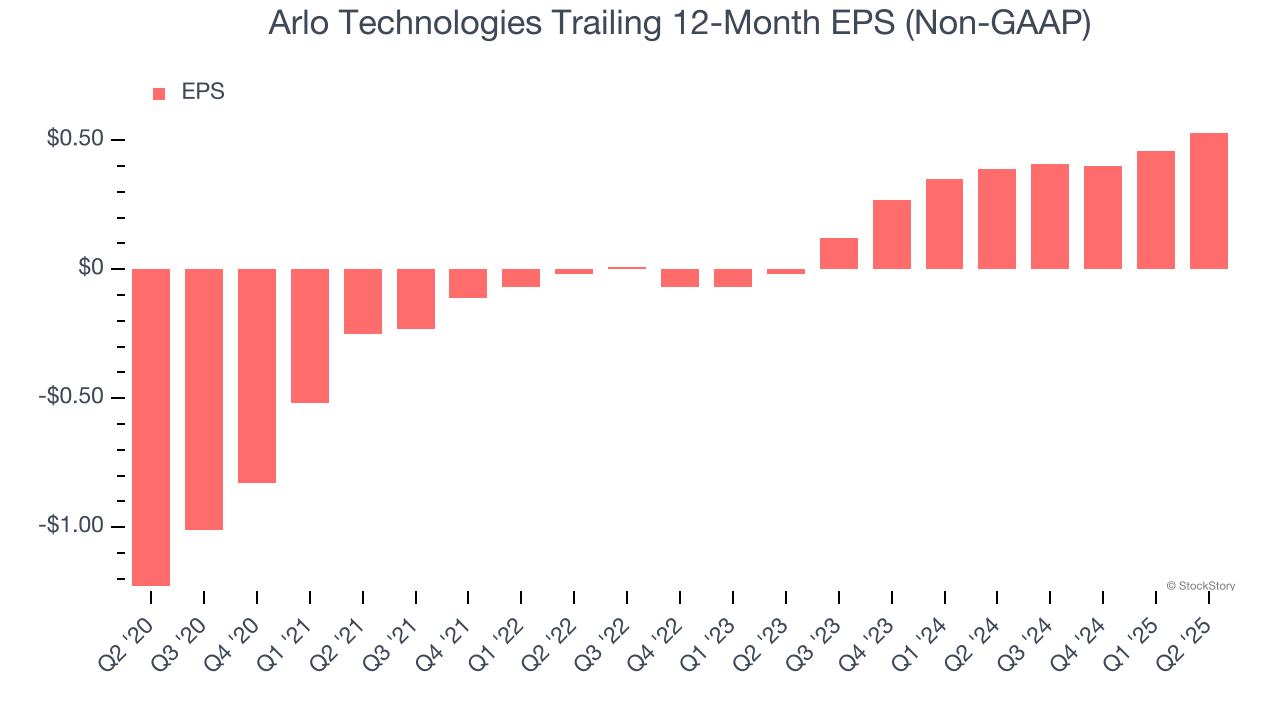
Smart security company Arlo (NYSE:ARLO) beat Wall Street’s revenue expectations in Q2 CY2025, with sales up 1.5% year on year to $129.4 million. Guidance for next quarter’s revenue was optimistic at $138 million at the midpoint, 2.3% above analysts’ estimates. Its non-GAAP profit of $0.17 per share was 11.3% above analysts’ consensus estimates.
Is now the time to buy Arlo Technologies? Find out by accessing our full research report, it’s free.
Arlo Technologies (ARLO) Q2 CY2025 Highlights:
- Revenue: $129.4 million vs analyst estimates of $123.5 million (1.5% year-on-year growth, 4.8% beat)
- Adjusted EPS: $0.17 vs analyst estimates of $0.15 (11.3% beat)
- Adjusted EBITDA: $17.99 million vs analyst estimates of $15.8 million (13.9% margin, 13.9% beat)
- Revenue Guidance for Q3 CY2025 is $138 million at the midpoint, above analyst estimates of $134.9 million
- Adjusted EPS guidance for Q3 CY2025 is $0.15 at the midpoint, below analyst estimates of $0.15
- Operating Margin: 1.5%, up from -9.3% in the same quarter last year
- Free Cash Flow Margin: 4.5%, similar to the same quarter last year
- Market Capitalization: $1.7 billion
Company Overview
Originally spun off from networking equipment maker Netgear in 2018, Arlo Technologies (NYSE:ARLO) provides cloud-based smart security devices and subscription services that help consumers and businesses monitor and protect their homes, properties, and loved ones.
Revenue Growth
A company’s long-term sales performance can indicate its overall quality. Any business can experience short-term success, but top-performing ones enjoy sustained growth for years.
With $507.7 million in revenue over the past 12 months, Arlo Technologies is a small player in the business services space, which sometimes brings disadvantages compared to larger competitors benefiting from economies of scale and numerous distribution channels. On the bright side, it can grow faster because it has more room to expand.
As you can see below, Arlo Technologies’s sales grew at a solid 7.1% compounded annual growth rate over the last five years. This is an encouraging starting point for our analysis because it shows Arlo Technologies’s demand was higher than many business services companies.

Long-term growth is the most important, but within business services, a half-decade historical view may miss new innovations or demand cycles. Arlo Technologies’s recent performance shows its demand has slowed as its annualized revenue growth of 3.6% over the last two years was below its five-year trend. 
This quarter, Arlo Technologies reported modest year-on-year revenue growth of 1.5% but beat Wall Street’s estimates by 4.8%. Company management is currently guiding for flat sales next quarter.
Looking further ahead, sell-side analysts expect revenue to grow 8% over the next 12 months, an improvement versus the last two years. This projection is noteworthy and suggests its newer products and services will catalyze better top-line performance.
Unless you’ve been living under a rock, it should be obvious by now that generative AI is going to have a huge impact on how large corporations do business. While Nvidia and AMD are trading close to all-time highs, we prefer a lesser-known (but still profitable) stock benefiting from the rise of AI. Click here to access our free report one of our favorites growth stories.
Operating Margin
Although Arlo Technologies was profitable this quarter from an operational perspective, it’s generally struggled over a longer time period. Its expensive cost structure has contributed to an average operating margin of negative 8.2% over the last five years. Unprofitable business services companies require extra attention because they could get caught swimming naked when the tide goes out.
On the plus side, Arlo Technologies’s operating margin rose by 13.1 percentage points over the last five years, as its sales growth gave it operating leverage. Still, it will take much more for the company to show consistent profitability.

In Q2, Arlo Technologies generated an operating margin profit margin of 1.5%, up 10.8 percentage points year on year. This increase was a welcome development and shows it was more efficient.
Earnings Per Share
Revenue trends explain a company’s historical growth, but the long-term change in earnings per share (EPS) points to the profitability of that growth – for example, a company could inflate its sales through excessive spending on advertising and promotions.
Arlo Technologies’s full-year EPS flipped from negative to positive over the last five years. This is a good sign and shows it’s at an inflection point.

Like with revenue, we analyze EPS over a more recent period because it can provide insight into an emerging theme or development for the business.
For Arlo Technologies, its two-year annual EPS growth of 434% was higher than its five-year trend. We love it when earnings growth accelerates, especially when it accelerates off an already high base.
In Q2, Arlo Technologies reported adjusted EPS at $0.17, up from $0.10 in the same quarter last year. This print easily cleared analysts’ estimates, and shareholders should be content with the results. Over the next 12 months, Wall Street expects Arlo Technologies’s full-year EPS of $0.53 to grow 27%.
Key Takeaways from Arlo Technologies’s Q2 Results
We enjoyed seeing Arlo Technologies beat analysts’ revenue expectations this quarter. We were also glad its revenue guidance for next quarter exceeded Wall Street’s estimates. On the other hand, its EPS guidance for next quarter missed. Zooming out, we think this was a good print with some key areas of upside. The stock traded up 12.5% to $18.50 immediately after reporting.
Sure, Arlo Technologies had a solid quarter, but if we look at the bigger picture, is this stock a buy? What happened in the latest quarter matters, but not as much as longer-term business quality and valuation, when deciding whether to invest in this stock. We cover that in our actionable full research report which you can read here, it’s free.
